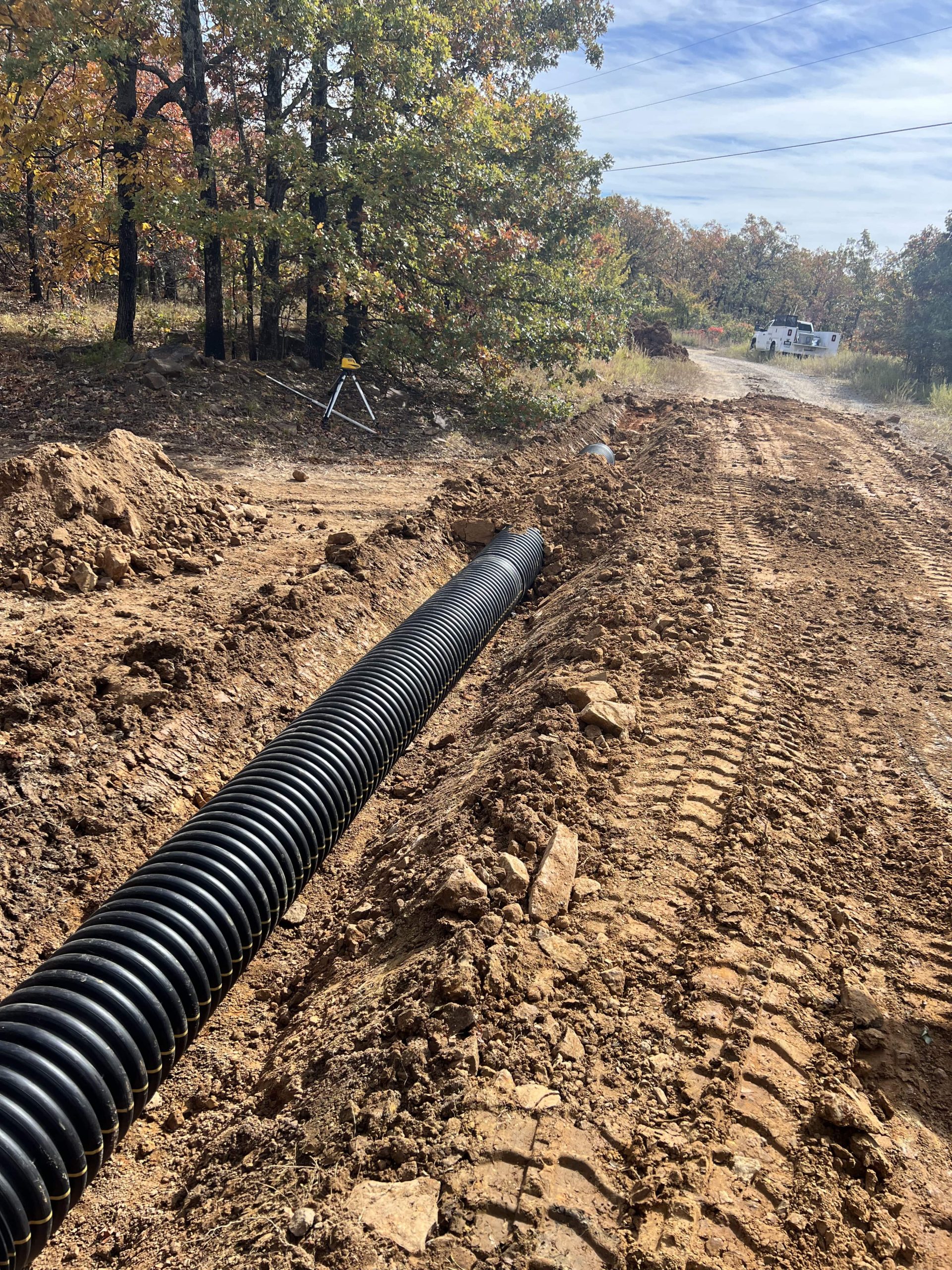Thorough Underbrush Clearing for Land Management
Thorough Underbrush Clearing for Land Management
Blog Article
Culvert Setup Made Easy: Step-by-Step Guide for Success
Setting up culverts might feel like a simple task, but ensuring an effective end result calls for cautious planning and execution. From picking the appropriate culvert size to incorporating correct drain steps, each step in the installation process plays a critical role in the functionality and long life of the culvert system. By complying with a methodical strategy and taking note of key information, the setup can continue efficiently, lessening prospective concerns down the line. Stay tuned to reveal the important steps and considerations that can make culvert installment a seamless and successful undertaking.
Choosing the Right Culvert Dimension
Selecting the appropriate culvert size is crucial for making sure reliable water flow and structural stability in culvert installation tasks - Pad Construction. The dimension of the culvert directly influences the circulation ability of water via the framework. A culvert that is also little can cause flooding and overflow, while one that is also huge might result in reduced water speed, possibly creating debris buildup and clogs
To figure out the best culvert dimension, variables such as the watershed area, optimal circulation rates, and hydraulic performance requirement to be carefully taken into consideration. Estimations based on these parameters aid in choosing a dimension that can effectively deal with the expected water quantity while minimizing the danger of blockages and structural failure.
It is necessary to consult engineering guidelines and standards to make sure that the selected culvert size satisfies the task requirements and local regulations (Pad Construction). By selecting the best culvert dimension, task supervisors can enhance water flow, prevent prospective concerns, and boost the total efficiency and durability of the culvert installment
Preparing the Installment Site
Reliable culvert setup necessitates thorough prep work of the installation website to make sure optimal structural assistance and functionality. Prior to commencing the installation process, it is critical to get rid of the site of any type of debris, plant life, or blockages that could impede the culvert's placement. Ensuring a level foundation is crucial for the correct alignment and stability of the culvert. This might involve grading the site to develop a smooth, also surface area that can appropriately sustain the weight of the culvert and any kind of anticipated tons. Additionally, proper compaction of the dirt under the culvert is needed to avoid settling or shifting in time.
Furthermore, it is necessary to take into consideration elements such as soil make-up, groundwater degrees, and ecological impacts when preparing the installment website. Carrying out an extensive site analysis can help determine any potential challenges or risks that might influence the culvert's efficiency. By taking the time to prepare the installment website appropriately, you can aid ensure a successful culvert setup that meets architectural requirements and ensures lasting functionality.
Placing the Culvert Correctly

The grade at which the culvert is positioned is critical for keeping a proper incline for water circulation. Furthermore, the culvert ought to be oriented correctly to guarantee that the inlet and electrical outlet are in the proper places. Pad Construction.
Backfilling and Compacting the Dirt
Correct backfilling and compaction of the soil around the culvert is vital to make certain stability and avoid possible problems in discover this info here the future. When the culvert is properly positioned, the following essential step is to backfill the location around it with appropriate material. The backfill material need to be without rocks, particles, and organic issue to stay clear of damages to the culvert. It is suggested to make use of granular material such as sand or gravel for backfilling, as it supplies good water drainage and compaction homes.
After positioning the backfill material, it is essential to small it in layers of consistent density. Using a compactor or a mechanical meddle, small the soil carefully to prevent harming the culvert. Compaction assists in decreasing the chances of negotiation and makes sure uniform support around the culvert. It is vital to portable the dirt uniformly on all sides of the culvert to maintain its architectural integrity.
Proper backfilling and compaction not just give security to the culvert however additionally assist in stopping dirt disintegration and preserving the longevity of the culvert system.
Making Certain Appropriate Water Drainage Integration
Integrating reliable drainage solutions plays a vital role in the overall performance and long life of culvert installations. Correct drainage assimilation is necessary for handling water circulation, preventing disintegration, and making sure the architectural integrity of the culvert system. To accomplish this, it is crucial to create a detailed drainage plan that takes into consideration aspects such as the quantity of water expected, the topography of the area, and the sort of dirt present.

In addition, integrating functions like disintegration control steps, such as riprap or greenery, can even more improve the effectiveness of the drain special info system. By carefully intending and applying these drainage options, culvert setups can operate efficiently and withstand the examination of time.
Verdict
Finally, correct culvert setup is essential for maintaining efficient drain systems. By selecting the appropriate culvert dimension, preparing the setup site, placing the culvert correctly, backfilling and compacting the dirt, and guaranteeing proper drain assimilation, success can be attained. Following these actions will certainly help make sure the durability and performance of the culvert, inevitably adding to the total success of the water drainage system.
Report this page